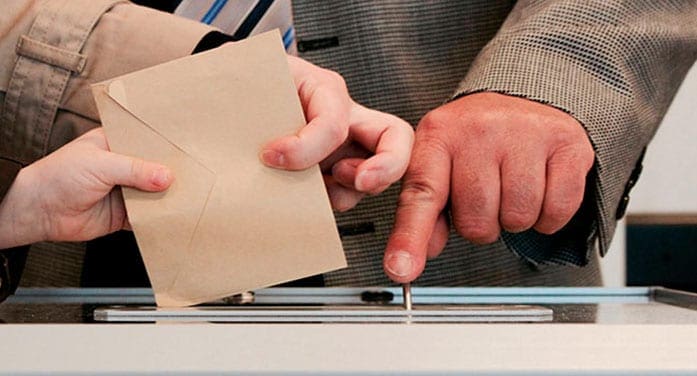 The Trudeau government wants to change the way Canadians elect their federal government, apparently without first specifically consulting Canadians via referendum. Yet with less than 40 percent of the vote last election, it has no mandate to transform the oldest practice of Canada’s democracy. Any attempt to do so without consent from the electorate may be unconstitutional because it would not follow the conventional practice.
The Trudeau government wants to change the way Canadians elect their federal government, apparently without first specifically consulting Canadians via referendum. Yet with less than 40 percent of the vote last election, it has no mandate to transform the oldest practice of Canada’s democracy. Any attempt to do so without consent from the electorate may be unconstitutional because it would not follow the conventional practice.
Precedents and conventions matter. The “Jennings Test” (named after Sir Ivor Jennings, an English constitutional scholar) prescribes three conditions that must be met before a practice becomes a convention:
- Were there precedents?
- Did the key actors in the precedents feel bound by a rule?
- Would there be a constitutional reason for the rule?
In 1981, the federal government wanted to unilaterally reform the constitution. A majority of the Supreme Court said no; based on the Jennings Test, convention dictated that the government first obtain agreement from the provinces.
In regards to electoral reform, over the past decade, four provincial governments pushing for electoral reform – Prince Edward Island (2005), British Columbia (2005 and 2009) and Ontario (2007) – put the question to the people for approval. New Brunswick planned a referendum but then the government was defeated. P.E.I. may have another one this year. This is a solid record of precedents.
To answer the second Jennings question: In all cases, government leaders felt bound by convention. In P.E.I., then-House Speaker Gregory Deighan eloquently stated that Islanders “should have a strong voice in determining how these electoral systems work because they do have significant bearing on the final results of an election.”
In B.C., then-Premier Gordon Campbell said electoral reform was a “significant change” that required approval from “a great majority” in the province.
And former Ontario premier Dalton McGuinty said that “electoral reform is so fundamental, so basic” that the government must ask the “people of Ontario for their judgment in this matter.”
In all four cases, incidentally, the people said no.
The convention of going to the people on electoral reform also exists in other parliamentary democracies such as the United Kingdom, Australia and New Zealand. Most recently, following the 2010 general election in the United Kingdom, the coalition government committed to holding a referendum on the question of electoral reform. Liberal Democratic Party leader Nick Clegg said “the final decision should be made not by us, but by the British people,” while Prime Minister David Cameron called the referendum, which was held in 2011 with the reforms rejected, a “democratic step.”
As for the third Jennings question – whether there’s a constitutional reason for the rule – the answer is yes. Canada adopted a Westminster system of Parliament that created a balance of power between the Crown, the two Houses of Parliament, and the Courts. The electoral system was a fundamental part of that bargain, based on conventions. It follows that any change to that balance – including electoral reform – would have to be ratified by those most affected. In this case, that would be the people.
The Canadian electoral system functions on law, but also on a system of conventions – understandings based on precedents, a recognition that strong public support clearly expressed in referenda is essential before any changes are made, and an obvious understanding of how a Westminster-style parliamentary system works to deliver effective government. To change that, past governments have agreed that the question must be put to a referendum.
Why should it be different for the government led by Mr. Trudeau?
Patrice Dutil is a professor in the Department of Politics and Public Administration at Ryerson University in Toronto and author of an essay on electoral reform by the Fraser Institute.
Patrice is a Troy Media contributor. Why aren’t you?
The views, opinions and positions expressed by columnists and contributors are the author’s alone. They do not inherently or expressly reflect the views, opinions and/or positions of our publication.


